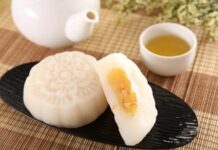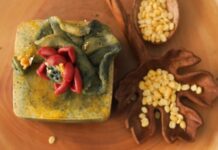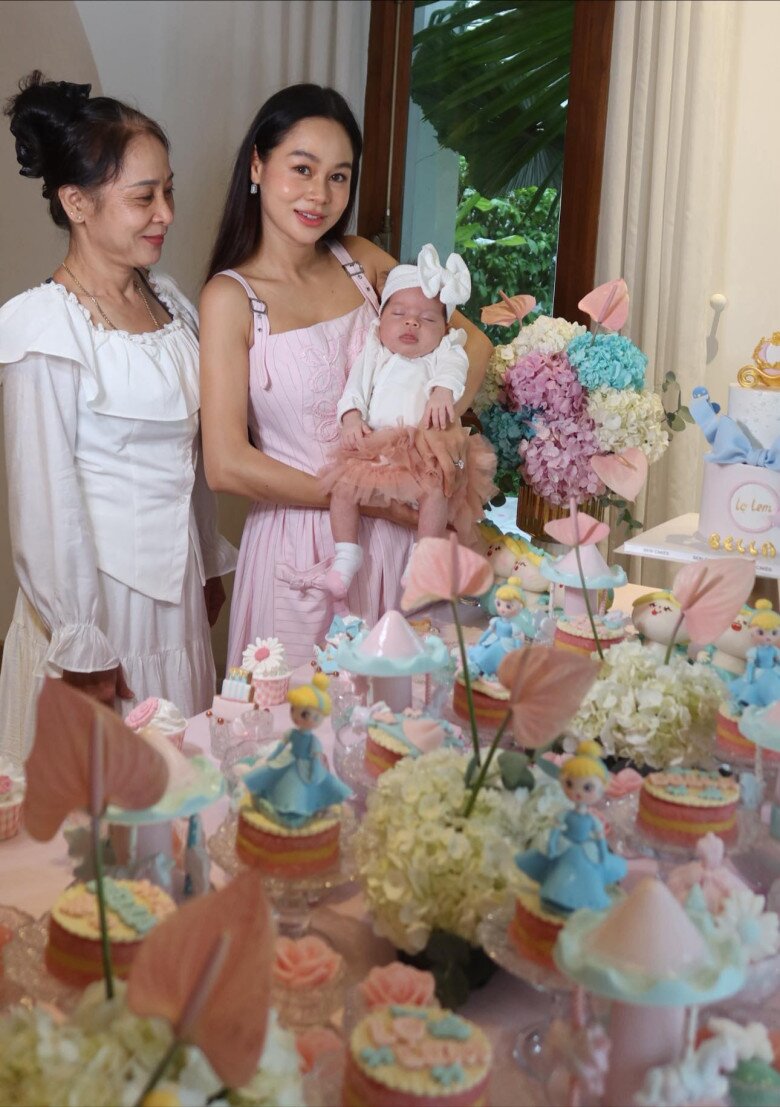
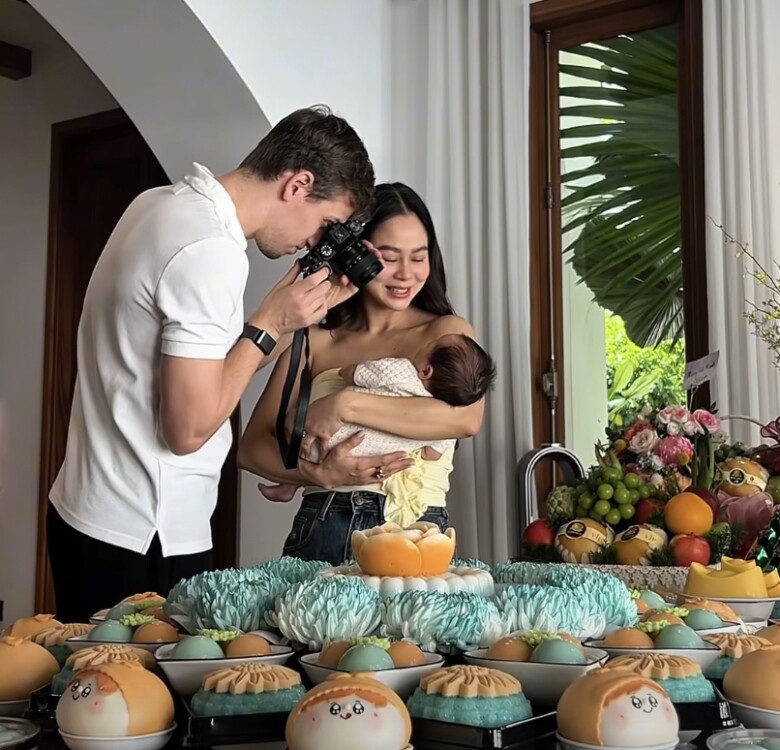
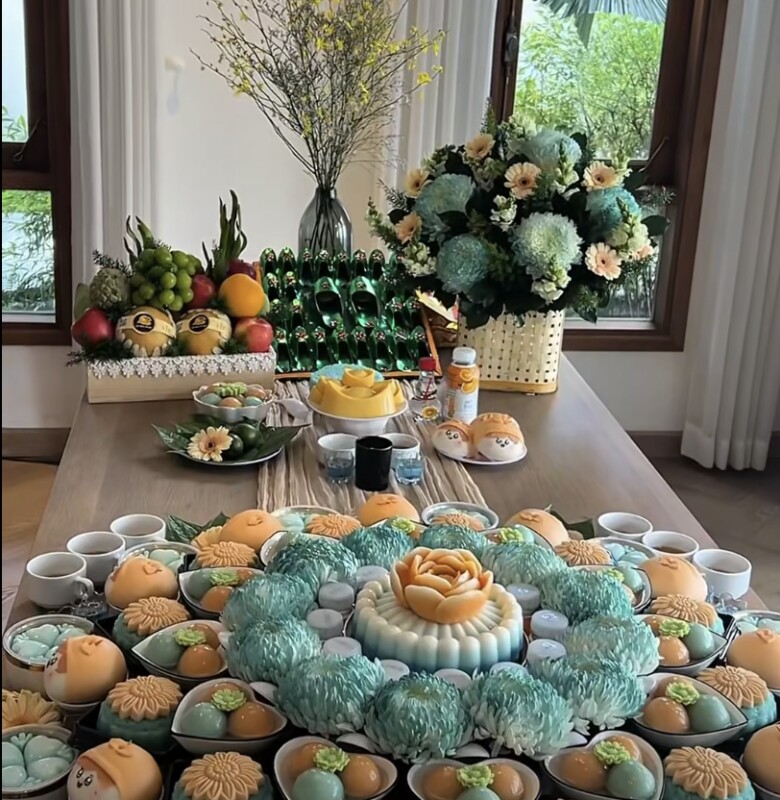
Jessica Diễm, born in 1990, is a yoga instructor to many Vietnamese celebrities, notably accompanying singer Hồ Ngọc Hà on her fitness journey. With her captivating presence on social media, this stunning 90s lady has garnered over 500,000 followers. After marrying her foreign husband, Jessica Diễm gave birth to a beautiful daughter, embracing a delightful blend of two heritages. Their little princess captivates everyone with her adorable charm and good looks.
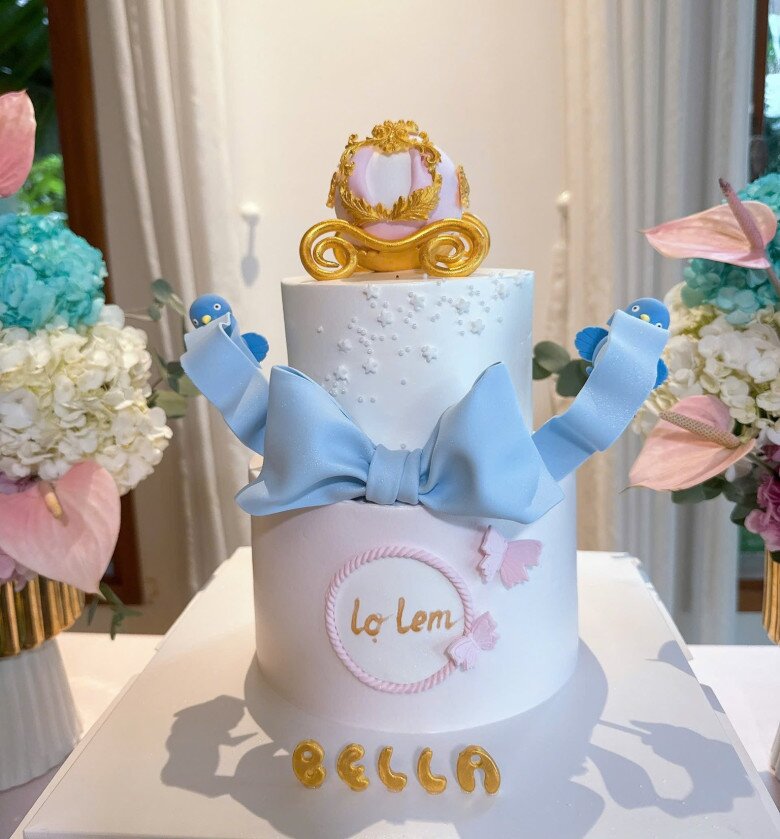
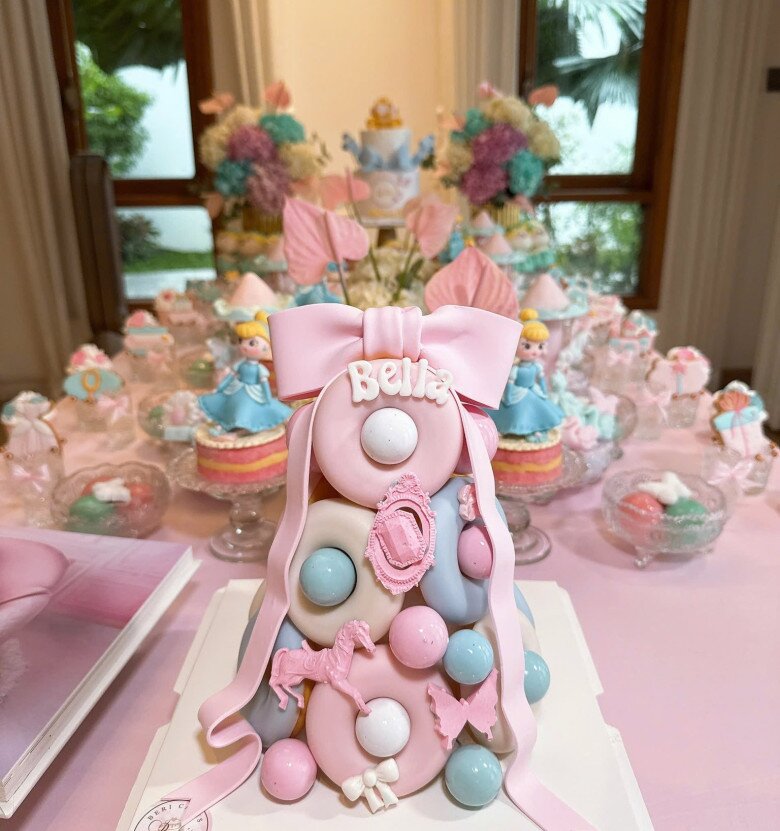
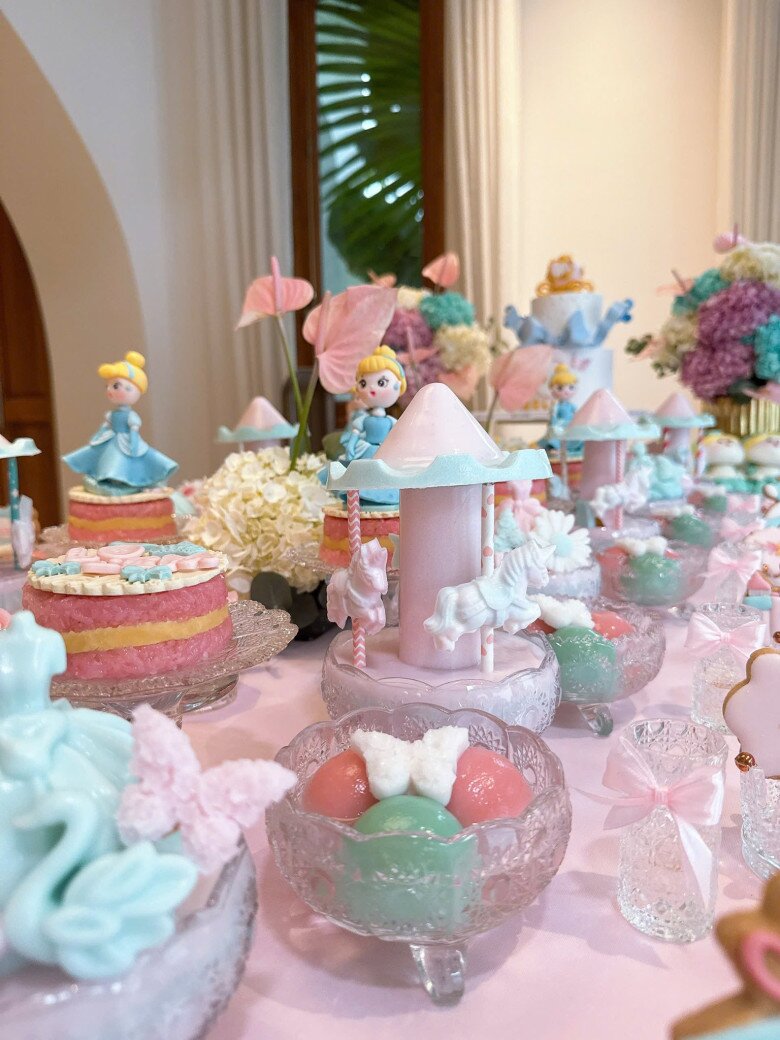
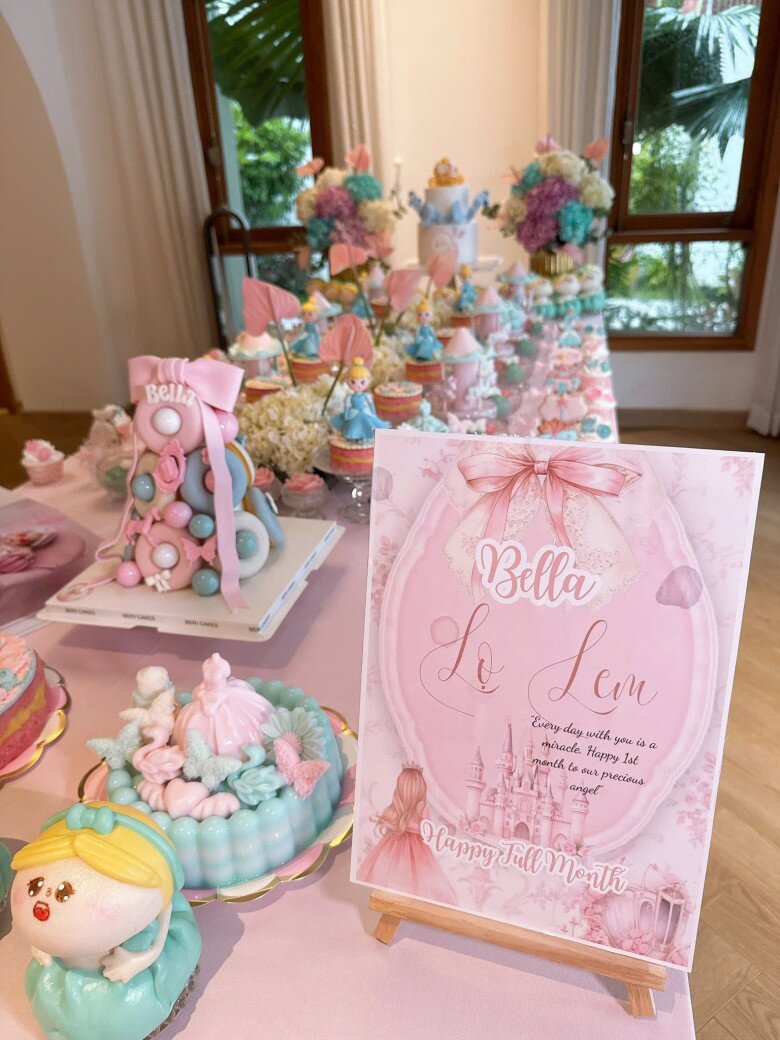
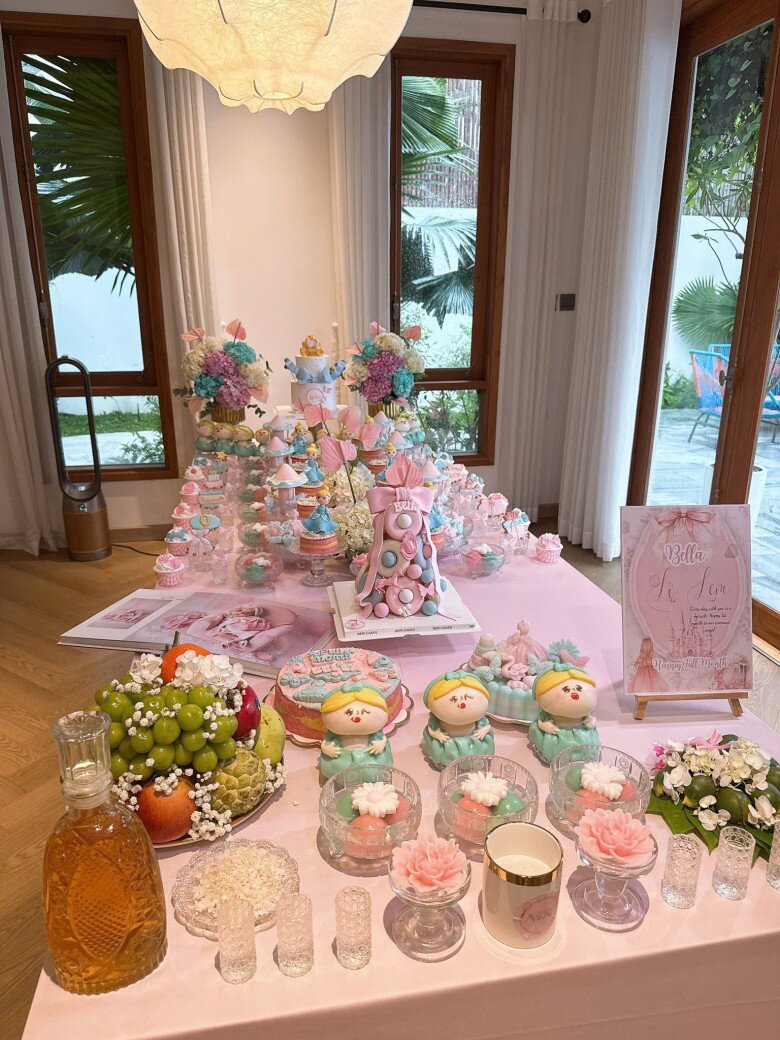
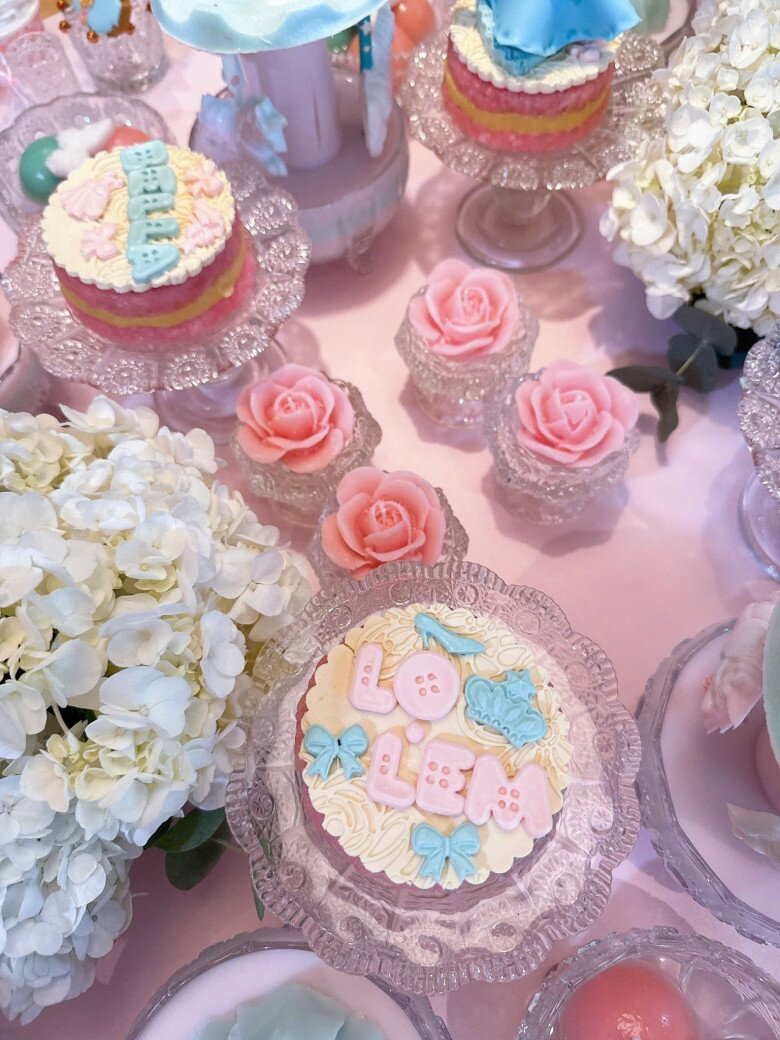
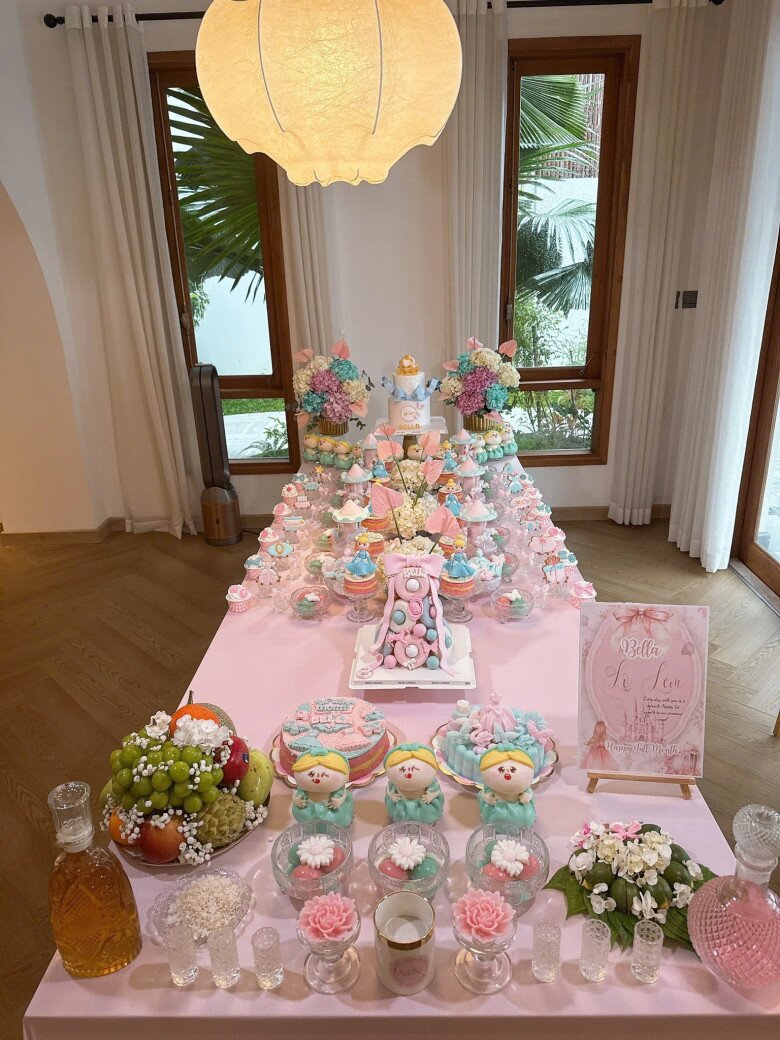
Although the two ceremonial trays appear simple and devoid of extravagance, the full-month ceremony prepared by hot mom Jessica Diễm for her daughter was comprehensive and lacked nothing. The vegetarian offerings were meticulously arranged and included colorful dishes such as sticky rice, desserts, cakes, fruits, flowers, and betel quid.
The new mom, alongside her Western husband, captured heartwarming photos with their baby girl, surrounded by the vibrant hues of the full-month celebration, adorned in shades of green and pink. Even after giving birth, Jessica Diễm received an abundance of compliments for her youthful and radiant appearance.
What is the Full-Month Ceremony (Cúng Mụ)?
The Full-Month Ceremony, or Cúng Mụ, is a traditional ritual among several Asian cultures, including the Vietnamese, to express gratitude and seek blessings from the Midwives or Mụ, mythical fairies believed to preside over childbirth.
This ceremony is typically held at significant milestones: three days after birth (end of confinement), one month (full month), 100 days (full age), and one year (first birthday).
Offerings for the Ceremony
A tray of betel quid with 12 small pieces and one larger piece, used in the Full-Month Ceremony among the Vietnamese
The preparation of offerings for the Full-Month Ceremony is a meticulous affair. In Vietnamese culture, the ceremony typically involves 12 small offerings (for the 12 Midwives) and one larger offering (for the Chief Midwife). The usual offerings include:
– Paper votive objects
– Betel and areca nuts
– Children’s toys
– Live creatures such as crabs, snails, or shrimp, either left alive or boiled. There should be 12 creatures of equal size and one larger one, or three small ones if a larger one is unavailable. These are placed in a bowl for the ceremony and then released into a pond or body of water afterward.
– Sweets and candies, divided into 12 equal portions and one larger or extra portion
– Savory dishes: sticky rice, boiled chicken, rice, soup, other dishes, and white liquor
– More sweets and candies, again divided into 12 portions and one larger or extra portion
– Incense and flowers of various colors, along with ceremonial money and clear water.
Arranging the Ceremonial Trays
In addition to preparing the offerings, it is essential to arrange the ceremonial trays correctly. Following the traditions of our ancestors, two trays should be used, placed one above the other with a gap of no more than 10 cm between them. The arrangement should follow the principle of “East for the flower vase, West for the offerings.”
The Ceremony Prayer
The ceremony prayer is an integral part of the full-month celebration, as it is believed to bring good health and blessings to the child.
In the past, people believed that the Midwives played a crucial role in ensuring a safe delivery and a healthy mother and baby. The ceremony also serves as an introduction of the new family member to the extended family and the ancestral lineage.
Ritual of Incense Burning and Prayer
Once all the offerings are in place, an adult representative of the family will light the incense and recite the following prayer:
“Today, on the (day)… of the (month)… (year)…, our (grand)child, (name)…, turns one month old. We present this offering to invite the Twelve Midwives and the Three Virtuous Lords to witness and accept our gratitude. We pray that you will continue to bless (name)… with strength, good health, and a happy disposition. May our family also be blessed with peace and happiness.”
The full-month ceremony is a unique cultural tradition passed down through generations, reflecting the wishes of parents for their children’s well-being and longevity, as well as the Vietnamese people’s reverence for their ancestors.

